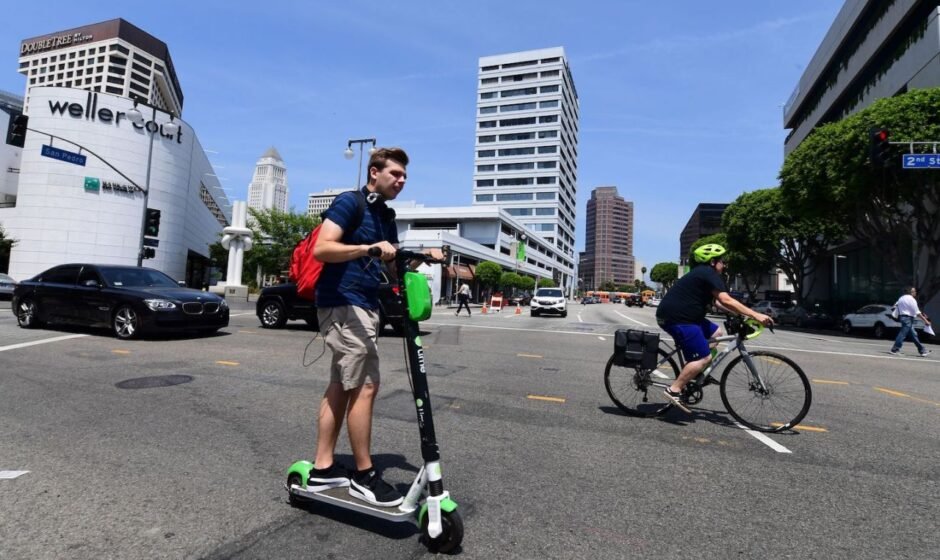Thoughtful transit advocates have expressed concerns about the soaring costs of constructing new urban and commuter rail systems in the United States. However, recent research from the Transit Costs Project and other organizations raises an important question: have we reached a point where it is more sensible to explore alternative options for sustainable transportation? With the increasing popularity of micromobility solutions such as e-bikes and e-scooters, the answer in many cases should be a resounding yes.
When evaluating the feasibility of an infrastructure project, it is crucial to consider both the costs and benefits. In the case of transit, the benefits are typically measured by the number of riders a project is expected to serve. However, if we view transit as a climate solution, it is also essential to take into account the number of car trips that the new infrastructure will replace.
New York and Northern California are hotspots for escalating project costs, despite having vastly different transit usage patterns. While New York City’s MTA New York City Transit carried 2.3 billion passengers in 2022, Bay Area transit agencies collectively transported only a fraction of that number. The Bay Area’s lower population density and lower propensity for using transit result in limited benefits from investing in transit infrastructure. For instance, the Second Avenue Subway Phase II project in New York City is projected to serve 36 million passengers annually at a construction cost of $7.7 billion. In contrast, the Bay Area Rapid Transit extension through downtown San Jose is expected to have an annual ridership of just 9.5 million, but at a cost of $12.2 billion.
One might argue that the San Jose transit project is still justified as a long-term investment. If the ridership projection holds true, the BART extension could carry close to 3 billion riders over 30 years, resulting in a capital cost of $4 per passenger. However, this analysis fails to consider BART’s relatively high operating costs per passenger and overlooks the benefits that would only be realized in the distant future. If the BART extension becomes operational in 2036 as planned, it would not reach its three billionth passenger until the late 2060s. Many climate experts believe that we need to achieve net-zero emissions well before that timeframe to mitigate the most severe impacts of climate change.
Instead of solely relying on transit infrastructure, cities like San Jose can achieve immediate climate benefits by encouraging individuals to replace some or all of their gasoline-powered car trips with electric vehicles. This shift is already happening, with more than four out of ten new vehicles sold in Santa Clara County being electric. By the time BART trains begin running through San Jose, California will have banned the sale of new internal combustion cars.
Critics argue that electric cars are not a comprehensive environmental solution due to their resource-intensive production, space requirements, and challenges associated with recycling certain components. Transit proponents advocate for reducing car ownership by improving the density of bus and rail networks and increasing service frequency. Another effective strategy for reducing car trips and promoting car-free living is improving micromobility options. Light e-bikes and e-scooters consume less electricity than electric cars and contribute to reducing greenhouse gas emissions, especially if the local power grid relies on fossil fuels.
An individual running an errand on an e-scooter consumes fewer resources and occupies less space compared to someone using a larger vehicle like Tesla’s Cybertruck. Furthermore, e-scooter users can easily bring their rides onto buses or trains, making them a convenient first- and last-mile solution. For those who prefer to rent, e-scooter and e-bike docking stations at transit hubs facilitate complete trips without the need for a car or taxi.
Advancements in technology have led to increased usage of shared micromobility services provided by companies like Lime and Lyft. In New York City, Lyft’s Citibike system witnessed a 27 percent increase in rides in October 2023 compared to October 2022. However, the adoption of micromobility in the Bay Area appears to be slower, potentially due to the lack of a unified system like Citibike. While some Bay Area cities have Lyft and/or Lime docking stations, others have none.
Expanding micromobility services to more cities and increasing their usage requires efforts from both companies and governments. For example, older individuals who have concerns about balance might be more willing to use bikes and scooters if three-wheeled e-trikes were available from shared micromobility providers. State and local governments can contribute by implementing consistent and light-touch regulations for micromobility products and services. While some states treat e-scooters like bicycles, others regulate them as motorcycles, imposing requirements such as licensing, registration, and insurance. In addition to appropriate regulations, providing sufficient protected lanes for micromobility vehicles is crucial, as it allows riders to avoid cars and travel safely.
Optimizing regulations and creating adequate lanes for micromobility vehicles require effort and funding, but the costs are significantly lower compared to extending urban rail systems. Additionally, micromobility solutions offer immediate reductions in greenhouse gas emissions, unlike rail extensions, which provide deferred benefits. Especially in situations where subway ridership is expected to be limited, encouraging micromobility proves to be a more cost-effective option, as seen in places like San Jose.
Marc Joffe is a federalism and state policy analyst at the Cato Institute.
Copyright 2023 Nexstar Media Inc. All rights reserved. This material may not be published, broadcast, rewritten, or redistributed.




